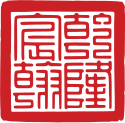
Back الإمبراطور تشيان لونغ Arabic الامبراطور تشيان لونج ARZ چیانلونق (ایمپیراتور) AZB Цяньлун BE Циенлун Bulgarian ཆན་ལུང་། (གོང་མ།) BO Qianlong BR Qianlong Catalan Gièng-lṳ̀ng Huòng-dá̤ CDO Čchien-lung Czech
| Qianlong Emperor 乾隆帝 | |||||||||||||||||||
|---|---|---|---|---|---|---|---|---|---|---|---|---|---|---|---|---|---|---|---|
 Portrait by Giuseppe Castiglione, 1736 | |||||||||||||||||||
| Emperor of the Qing dynasty | |||||||||||||||||||
| Reign | 18 October 1735 – 9 February 1796 | ||||||||||||||||||
| Predecessor | Yongzheng Emperor | ||||||||||||||||||
| Successor | Jiaqing Emperor | ||||||||||||||||||
| Emperor Emeritus of the Qing dynasty | |||||||||||||||||||
| Tenure | 9 February 1796 – 7 February 1799 | ||||||||||||||||||
| Prince Bao of the First Rank | |||||||||||||||||||
| Tenure | 1733–1735 | ||||||||||||||||||
| Born | 25 September 1711 Yonghe Temple, Beijing | ||||||||||||||||||
| Died | 7 February 1799 (aged 87) Forbidden City, Beijing | ||||||||||||||||||
| Burial | Yu Mausoleum, Eastern Qing tombs | ||||||||||||||||||
| Spouses | |||||||||||||||||||
| Issue more... | |||||||||||||||||||
| |||||||||||||||||||
| House | Aisin-Gioro | ||||||||||||||||||
| Dynasty | Qing | ||||||||||||||||||
| Father | Yongzheng Emperor | ||||||||||||||||||
| Mother | Empress Xiaoshengxian | ||||||||||||||||||
| Religion | Buddhism | ||||||||||||||||||
| Seal[d] |  | ||||||||||||||||||
| Chinese name | |||||||||||||||||||
| Traditional Chinese | 乾隆帝 | ||||||||||||||||||
| Simplified Chinese | 乾隆帝 | ||||||||||||||||||
| |||||||||||||||||||
The Qianlong Emperor (25 September 1711 – 7 February 1799), also known by his temple name Emperor Gaozong of Qing, personal name Hongli, was the sixth emperor of the Qing dynasty and the fourth Qing emperor to rule over China proper. He reigned officially from 1735 until his abdication in 1796, but retained ultimate power subsequently until his death in 1799, making him one of the longest-reigning monarchs in history as well as one of the longest-lived.
The fourth and favourite son of the Yongzheng Emperor, Qianlong ascended the throne in 1735. A highly ambitious military leader, he led a series of campaigns into Inner Asia, Burma, Nepal and Vietnam and suppressed rebellions in Jinchuan and Taiwan. During his lifetime, he was given the deified title Emperor Manjushri by the Qing's Tibetan subjects. Domestically, Qianlong was a major patron of the arts as well as a prolific writer. He sponsored the compilation of the Siku Quanshu (Complete Library of the Four Treasuries), the largest collection ever made of Chinese history, while also overseeing extensive literary inquisitions that led to the suppression of some 3,100 works.
In 1796, Qianlong abdicated after 60 years on the throne out of respect towards his grandfather, the Kangxi Emperor, who ruled for 61 years, so as to avoid usurping him as the longest-reigning Qing emperor.[1] He was succeeded by his son, who ascended the throne as the Jiaqing Emperor but ruled only in name as Qianlong held on to power as Emperor Emeritus until his death in 1799 at the age of 87.
Qianlong oversaw the High Qing era, which marked the height of the dynasty's power, influence, and prosperity. During his long reign, the empire had the largest population and economy in the world and reached its greatest territorial extent. At the same time, years of exhaustive campaigns severely weakened the Qing military, which coupled with endemic corruption, wastefulness in his court and a stagnating civil society, ushered the gradual decline and ultimate demise of the Qing empire.
Cite error: There are <ref group=lower-alpha> tags or {{efn}} templates on this page, but the references will not show without a {{reflist|group=lower-alpha}} template or {{notelist}} template (see the help page).
- ^ Jacobs, Andrew (31 December 2008). "Dusting Off a Serene Jewel Box". The New York Times.